When the sun sets over Rome, the city doesn’t sleep-it transforms. The Colosseum stops being just a ruin and becomes a glowing monument under soft lights. The Trevi Fountain stops being a tourist photo op and turns into a romantic whisper of splashing water and distant laughter. Nighttime in Rome isn’t just about skipping the crowds-it’s about experiencing the city’s soul in a way daylight never shows.
Walk the Historic Center After Dark
Start your night by strolling through the heart of Rome. The streets around Piazza Navona, Campo de’ Fiori, and the Pantheon feel completely different after 8 p.m. The daytime hustle fades. The only sounds are footsteps on cobblestones, the clink of wine glasses from open-air cafés, and the occasional accordion playing a classic Neapolitan tune.You don’t need a map. Just wander. Turn down a narrow alley near the Spanish Steps and find a hidden bar with no sign. Step into a piazza where locals sit on stone ledges, sipping Aperol spritzes and talking for hours. The Vatican’s lights glow softly in the distance, and the dome of St. Peter’s Basilica looks like it’s floating in the dark.
This is Rome’s quiet magic: ancient architecture lit just enough to feel sacred, not staged. You’ll pass centuries-old buildings with balconies draped in laundry, and hear snippets of Italian from open windows. No tour group will follow you here. Just you, the shadows, and the city breathing.
See the Vatican Museums and Sistine Chapel at Night
Most people don’t know the Vatican opens for special night tours. These aren’t the crowded daytime lines. On select evenings, you can walk through the Vatican Museums with barely a dozen others. The Sistine Chapel, usually packed with selfie sticks and flashing phones, becomes a hushed cathedral of color and silence.The ceiling Michelangelo painted over four years glows under focused lighting. The Last Judgment on the altar wall feels heavier, more personal, in the quiet. You can stand there for minutes without someone bumping into you. The experience lasts about 90 minutes and includes access to the Raphael Rooms and the Gallery of Maps.
Tickets sell out fast. Book through the official Vatican website at least two weeks ahead. Night tours run mostly on Fridays and Saturdays from April to October, with occasional winter dates. Arrive 15 minutes early. Security is strict-no bags larger than a small purse, no tripods, no flash.
Dine at a Trattoria with Local Flavor
Rome’s food doesn’t wait for daylight. Skip the restaurants with menus in five languages and find a place where the chef nods at you in Italian and asks, “Cosa desidera?”Try Da Enzo al 29 in Trastevere. It’s tiny. You’ll likely share a table. The carbonara is thick with egg yolk and pancetta, not cream. The cacio e pepe is peppery and creamy, served in a warm ceramic bowl. They don’t take reservations. Show up at 8:30 p.m. or later. The wait is worth it.
Or head to Roscioli Salumeria con Cucina near Campo de’ Fiori. It’s not cheap, but the wine list is curated by one of Rome’s top sommeliers. Try the house-made mortadella and a glass of Cesanese del Piglio. The staff will tell you which bottles pair best with the cheeses.
Don’t rush. Dinner in Rome at night is a ritual. Two hours. Three courses. A bottle of wine shared. The kind of meal that lingers in your memory longer than any sightseeing spot.
Enjoy Live Music in Trastevere
Trastevere comes alive after dark-not with clubs, but with intimate live music. Bars like La Vite and Il Tavolo di Gennaro host jazz, folk, and Roman folk songs. You’ll find students, artists, and retirees all listening quietly, sipping wine, tapping their feet.At La Vite, the singer often plays classics like “Volare” or “O Sole Mio,” but sometimes she’ll do a modern Italian pop song with a jazz twist. The crowd doesn’t clap loudly. They listen. You’ll feel like you’ve stumbled into a private concert.
There’s no cover charge at most places. Just buy a drink and find a seat near the window. The music starts around 9:30 p.m. and goes until midnight. If you’re lucky, you’ll catch a local band playing original songs in Roman dialect-something you won’t hear anywhere else.
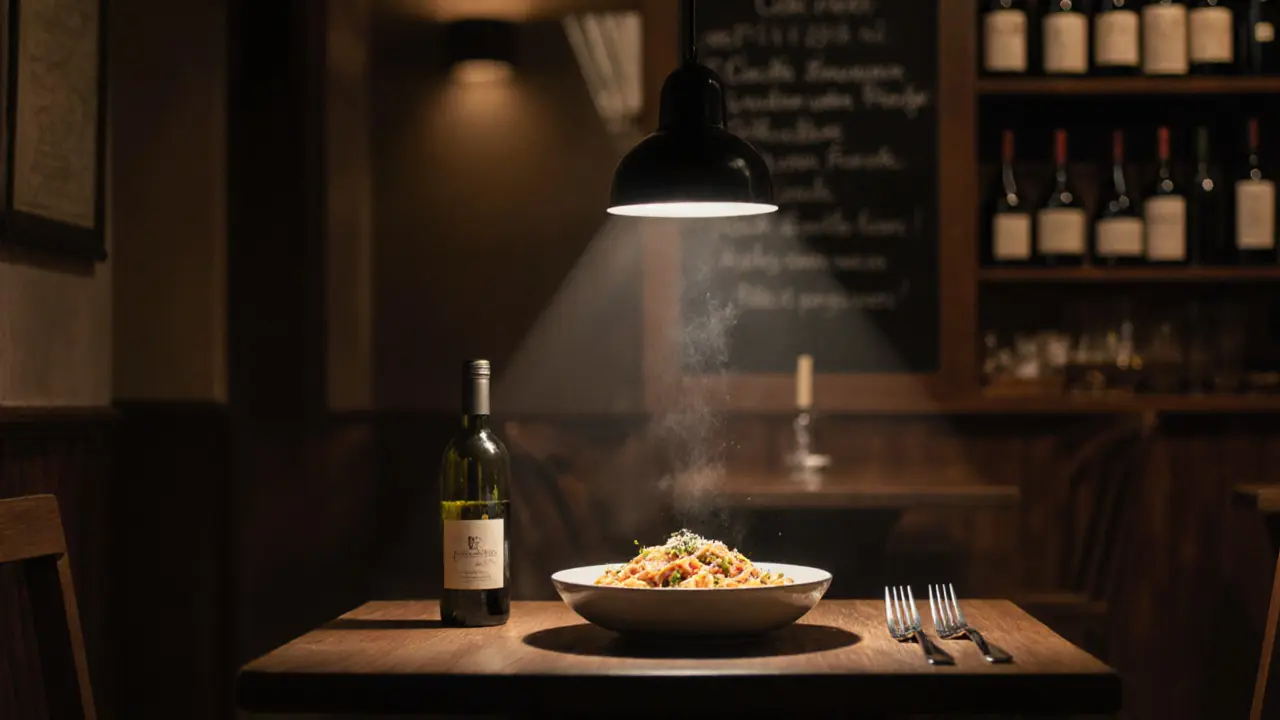
Take a Nighttime River Cruise on the Tiber
For a different view of Rome, hop on a small boat that cruises the Tiber River after sunset. These aren’t loud party boats. They’re quiet, covered vessels with soft lighting, seating for 20 people max, and a guide who tells stories about the bridges, churches, and palaces you pass.You’ll glide under Ponte Sant’Angelo, lined with Bernini’s angel statues, each lit from below. You’ll see the Castel Sant’Angelo glowing like a fortress from a fairy tale. The dome of St. Peter’s appears again, this time reflected in the water.
The cruise lasts about 45 minutes. It’s not expensive-around €20 per person. Book ahead on the official Tiber River Cruises website. Go on a clear night. The city lights shimmer on the water, and the silence is broken only by the gentle splash of the boat.
Drink Under the Stars at a Rooftop Bar
Rome has dozens of rooftop bars, but only a few feel real. Skip the ones with DJs and neon signs. Look for places like La Terrazza at the Hotel Raphael, or Il Gallo d’Oro near Piazza Navona.At La Terrazza, you sit on a terrace with views of the Pantheon. The bartender makes a perfect Negroni. No one’s taking photos. Everyone’s just watching the stars come out over the ancient rooftops. The city feels close enough to touch.
At Il Gallo d’Oro, the drinks are crafted with local herbs and citrus. The menu changes weekly. You might try a gin infused with Roman mint and lemon verbena. The music is low. The chairs are deep. You could sit there for hours.
Reservations are a must. Arrive by 8:30 p.m. to get a good spot. Wear something neat-no flip-flops. This isn’t a club. It’s a moment.
Visit the Jewish Ghetto and Taste Roman-Jewish Cuisine
The Jewish Ghetto is one of Rome’s oldest neighborhoods-and one of its most peaceful at night. The streets are quiet. The synagogue glows with warm light. The air smells of frying artichokes.Head to Antico Forno Roscioli or Da Baffetto for carciofi alla giudia-deep-fried artichokes crispy on the outside, tender inside. Try the Jewish-style pasta with eggplant and raisins. It’s sweet, savory, and unlike anything else in Rome.
The neighborhood feels like a secret. You’ll see elderly men reading newspapers on benches. Women chatting outside their homes. No tourists. Just life, slow and real.
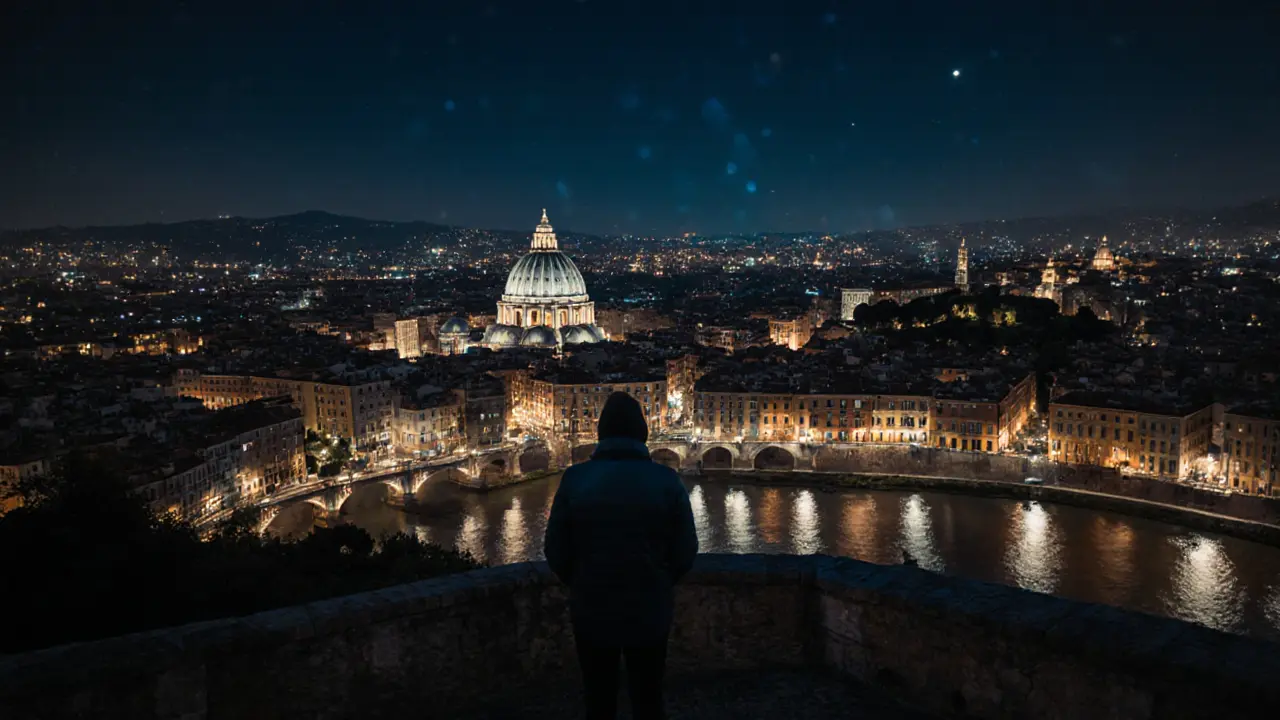
Find a Hidden Gelato Spot
Forget the gelato shops with neon signs and long lines. The best gelato in Rome at night is found in quiet corners. Try Giolitti near the Pantheon after 9 p.m. The pistachio is made with real nuts, not paste. The stracciatella has real chocolate flakes.Or walk to La Romana in Trastevere. They don’t have a sign. Just a small window and a chalkboard. The owner, a woman in her 60s, asks what flavor you want. She scoops it with a wooden paddle. You eat it standing up, watching the moonlight on the cobblestones.
It’s not fancy. It’s perfect.
Watch the City Lights from Gianicolo Hill
If you want one last view of Rome before heading back to your hotel, take the short walk up to Gianicolo Hill. It’s quiet. No crowds. Just a few locals walking their dogs or sitting on benches.From here, you see the whole city lit up-the dome of St. Peter’s, the towers of the Vatican, the red rooftops of Trastevere, the glow of the Tiber winding through the center. It’s the best panorama in Rome. And it’s free.
Go just before midnight. Bring a jacket. The wind picks up. But the view? Worth every step.
Is it safe to walk in Rome at night?
Yes, Rome is generally safe at night, especially in the historic center, Trastevere, and around major attractions. Stick to well-lit streets and avoid isolated alleys after midnight. Pickpockets can be active near tourist hotspots, so keep your bag closed and avoid flashing valuables. Most locals walk home alone at night without issue.
What time do restaurants close in Rome?
Most restaurants close between 11 p.m. and midnight. Trattorias in tourist areas may close earlier, around 10:30 p.m., while places in Trastevere and Testaccio often stay open until 1 a.m. or later. If you’re planning a late dinner, aim to arrive by 9:30 p.m. to have time for multiple courses.
Are night tours of the Colosseum available?
Yes, the Colosseum offers limited night tours on select evenings, usually on Fridays and Saturdays from spring through fall. These tours include access to the underground chambers and arena floor, areas not open during the day. Tickets sell out quickly, so book through the official Coop Culture website at least three weeks in advance.
What should I wear for a night out in Rome?
Rome is casual but stylish. No need for formal wear, but avoid shorts, flip-flops, or tank tops in nicer restaurants or rooftop bars. Light layers work best-days are warm, nights can be cool, especially near the river or on hills. A light jacket or scarf is always a good idea.
Can I visit the Trevi Fountain at night?
Yes, the Trevi Fountain is open 24/7 and is especially beautiful at night when it’s lit up. Crowds thin out after 10 p.m., making it easier to take photos and enjoy the sound of the water. It’s safe to visit, but stay aware of your surroundings-some pickpockets target tourists near popular spots, even at night.
What to Bring and What to Avoid
Bring: A light jacket, comfortable walking shoes, a small portable charger, and cash. Many small bars and gelaterias don’t take cards after 9 p.m. Avoid: Wearing expensive jewelry, carrying large bags, or walking alone in poorly lit areas near the Termini Station after midnight. Don’t expect to find open pharmacies or supermarkets late at night-plan ahead.Final Thought
Rome at night isn’t a checklist. It’s a feeling. It’s the warmth of a glass of wine on a quiet terrace. The echo of your footsteps under ancient arches. The taste of gelato that melts slow because you’re not in a rush. It’s the city showing you its most intimate self-not the one in guidebooks, but the one that lives after the last tour bus leaves.Don’t just see Rome at night. Let it see you too.
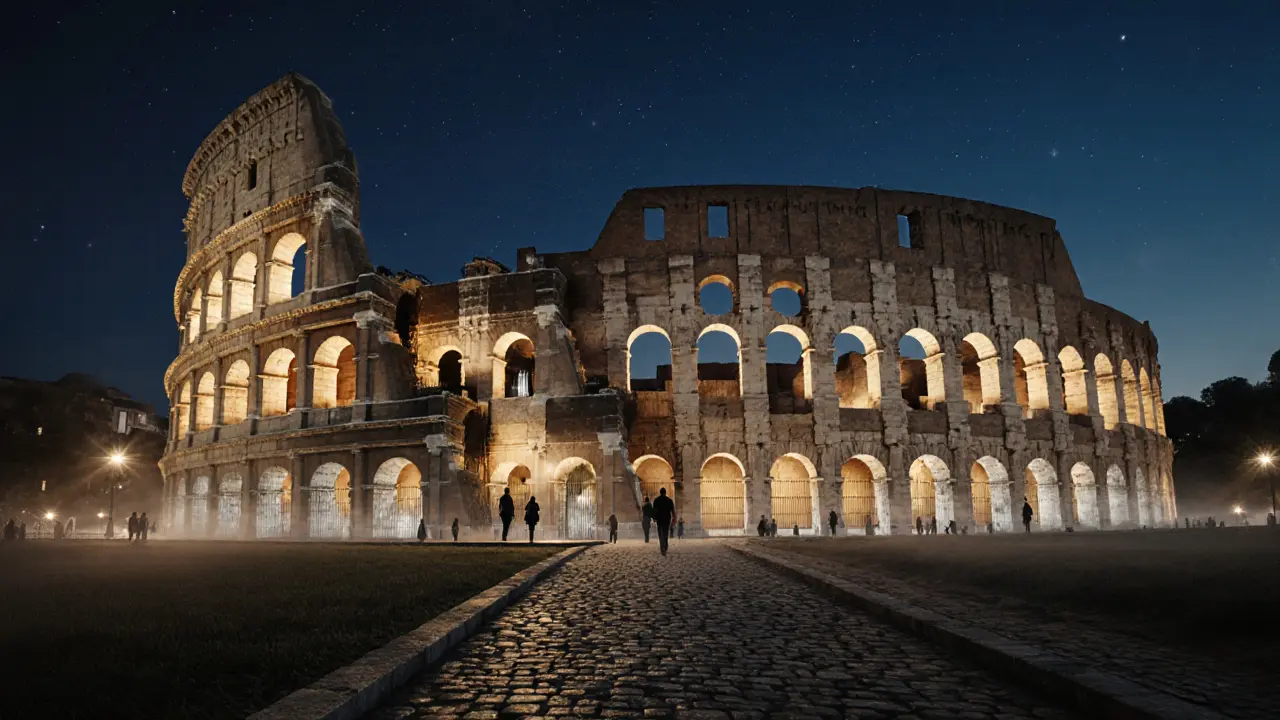
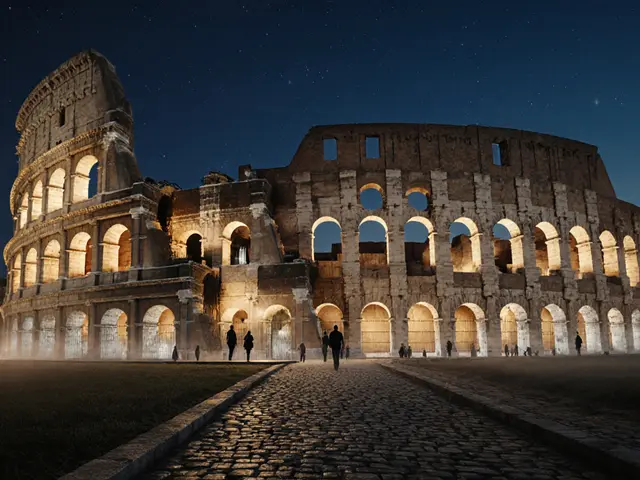
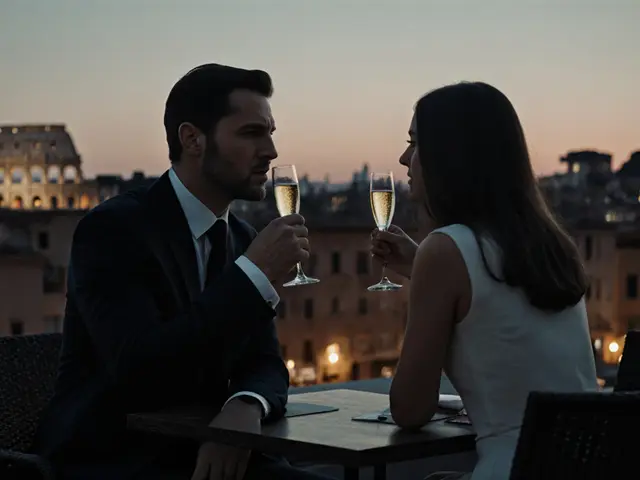


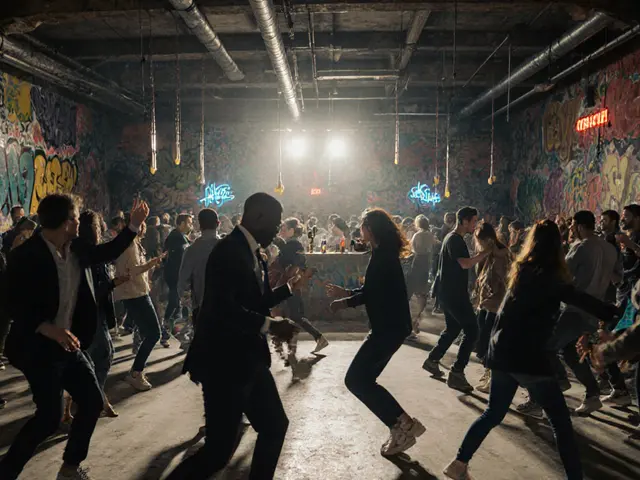
While the prose is undeniably lyrical, one must interrogate the epistemological underpinnings of this ‘soul’ narrative. The Colosseum, as a Roman architectural artifact, does not ‘transform’-it is illuminated by municipal lighting protocols. The Trevi Fountain’s ‘romantic whisper’ is, in fact, the result of hydrodynamic engineering and acoustic reflection off travertine. To anthropomorphize urban infrastructure is not poetic-it is a category error masked as cultural critique.
Moreover, the recommendation to ‘wander’ without a map assumes a level of spatial literacy and safety infrastructure that is not universally accessible. The suggestion to enter ‘hidden bars with no sign’ is not charming-it is a liability. In cities with documented petty theft rates, such advice borders on negligent.
The Vatican night tour logistics are correctly detailed, but the omission of accessibility accommodations for disabled patrons is glaring. The entire piece reads like a curated Instagram caption masquerading as travel journalism. Where is the critical engagement with gentrification? The displacement of local communities by ‘authentic’ trattorias? The commodification of Roman dialect music in Trastevere?
This is not a guide. It is a luxury fantasy for the affluent, wrapped in semiotic fluff. The ‘quiet magic’ you describe is, in reality, the quiet erasure of everyday Roman life beneath a veneer of curated aestheticism. I applaud the stylistic effort. I deplore the ideological blindness.
First of all, ‘cacio e pepe is peppery and creamy’? No. It’s NOT ‘creamy.’ It’s emulsified. You don’t ‘add cream’-that’s a sin against pasta. And ‘carbonara with egg yolk and pancetta, not cream’? Please. That’s the bare minimum. If you’re not using guanciale from Abruzzo and Pecorino Romano aged 18 months, you’re serving garbage.
And ‘La Terrazza’? Please. That’s a tourist trap with a view. Real Romans drink Aperol at Campo de’ Fiori, not on terraces where the Negroni costs €18. And ‘Il Gallo d’Oro’? That’s a place where sommeliers charge extra for ‘tasting notes’ you could Google. You didn’t even mention the proper glassware. A Negroni must be served in a rocks glass, not a wine flute. You’re embarrassing yourself.
And ‘Jewish Ghetto’? You say ‘no tourists’? Please. The entire area is now a Michelin-starred food court for American Jews who think ‘carciofi alla giudia’ is ‘authentic’ because it’s fried. It’s not. It’s a tourist version of a Roman-Jewish tradition that’s been diluted since the 1980s.
And you didn’t even mention the correct pronunciation of ‘Trastevere.’ It’s tra-steh-VEH-reh. Not ‘tra-steh-VEER.’ If you can’t even get the language right, why should I trust your food advice?
This entire article is amateurish. And you call it ‘the city’s soul’? No. The soul of Rome is in the 70-year-old nonna who makes pasta at 5 a.m. and doesn’t care about your Instagram. You didn’t mention her once.